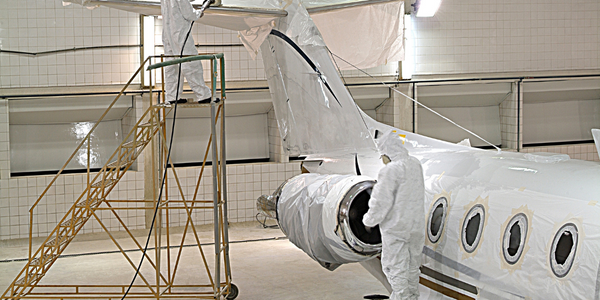Global Leader in Textiles and Materials Processing Taps IntelePeer for Cost-effective, Secure Communications

Customer Company Size
Large Corporate
Region
- America
- Asia
- Europe
Country
- United States
Product
- IntelePeer CoreCloud™ SIP Trunking
Tech Stack
- Microsoft Lync Enterprise Voice
- Session Border Controller (SBC) technology
- Multiprotocol Label Switching (MPLS) network
Implementation Scale
- Enterprise-wide Deployment
Impact Metrics
- Cost Savings
- Productivity Improvements
Technology Category
- Application Infrastructure & Middleware - API Integration & Management
Applicable Industries
- Aerospace
Applicable Functions
- Discrete Manufacturing
- Procurement
Use Cases
- Predictive Maintenance
- Cybersecurity
Services
- System Integration
- Cloud Planning, Design & Implementation Services
About The Customer
Albany International Corp. is a global advanced textiles and materials processing company with two core businesses. Machine Clothing is the world’s leading producer of custom-designed fabrics and belts essential to production in the paper, nonwovens, and other process industries. Albany Engineered Composites is a rapidly growing supplier of highly engineered composite parts for the aerospace industry. Albany International is headquartered in Rochester, New Hampshire, operates 18 plants in 11 countries, employs 4,000 people worldwide, and is listed on the New York Stock Exchange (Symbol AIN). The company offers a wide range of products and services, and more information about the Company and its products and services can be found at www.albint.com.
The Challenge
Albany International Corp., a global leader in advanced textiles and materials processing, was in need of a secure, reliable, and cost-effective communications solution to enhance its business operations. The company operates 18 plants in 11 countries and employs 4,000 people worldwide. As Albany was evaluating its telecommunications services, it needed a solution that would not only be cost-effective but also enhance the company’s security and bandwidth with minimal investment. The ability to balance the deployment and integration of new technology without impairing the company’s daily business processes and bottom line performance was paramount in selecting the right vendor. Albany needed an experienced and efficient SIP trunking provider to achieve its goals.
The Solution
Albany International Corp. selected IntelePeer and its CoreCloud™ SIP Trunking for its telecommunications services. Albany uses Microsoft Lync Enterprise Voice for its telephony solutions globally, so it was important for the company to use a SIP trunking provider, like IntelePeer, that was qualified by Microsoft to support Lync features and functionality. The decision to partner with IntelePeer allowed Albany to maintain control of its preferred Session Border Controller (SBC) technology. Before IntelePeer SIP trunking, Albany was carrying its dial-in conferencing traffic over their Multiprotocol Label Switching (MPLS) network from one of the branch sites into the data center. Utilizing IntelePeer and its CoreCloud™ SIP Trunking, Albany is able to take their inbound dial-in conferencing calls directly into the data center where the Microsoft Lync Front End Servers reside.
Operational Impact
Quantitative Benefit

Case Study missing?
Start adding your own!
Register with your work email and create a new case study profile for your business.
Related Case Studies.

Case Study
Airbus Soars with Wearable Technology
Building an Airbus aircraft involves complex manufacturing processes consisting of thousands of moving parts. Speed and accuracy are critical to business and competitive advantage. Improvements in both would have high impact on Airbus’ bottom line. Airbus wanted to help operators reduce the complexity of assembling cabin seats and decrease the time required to complete this task.

Case Study
Aircraft Predictive Maintenance and Workflow Optimization
First, aircraft manufacturer have trouble monitoring the health of aircraft systems with health prognostics and deliver predictive maintenance insights. Second, aircraft manufacturer wants a solution that can provide an in-context advisory and align job assignments to match technician experience and expertise.

Case Study
Aerospace & Defense Case Study Airbus
For the development of its new wide-body aircraft, Airbus needed to ensure quality and consistency across all internal and external stakeholders. Airbus had many challenges including a very aggressive development schedule and the need to ramp up production quickly to satisfy their delivery commitments. The lack of communication extended design time and introduced errors that drove up costs.

Case Study
Accelerate Production for Spirit AeroSystems
The manufacture and assembly of massive fuselage assemblies and other large structures generates a river of data. In fact, the bill of materials for a single fuselage alone can be millions of rows of data. In-house production processes and testing, as well as other manufacturers and customers created data flows that overwhelmed previous processes and information systems. Spirit’s customer base had grown substantially since their 2005 divestiture from Boeing, resulting in a $41 billion backlog of orders to fill. To address this backlog, meet increased customer demands and minimize additional capital investment, the company needed a way to improve throughput in the existing operational footprint. Spirit had a requirement from customers to increase fuselage production by 30%. To accomplish this goal, Spirit needed real-time information on its value chain and workflow. However, the two terabytes of data being pulled from their SAP ECC was unmanageable and overloaded their business warehouse. It had become time-consuming and difficult to pull aggregate data, disaggregate it for the needed information and then reassemble to create a report. During the 6-8 hours it took to build a report, another work shift (they run three per day) would have already taken place, thus the report content was out-of-date before it was ever delivered. As a result, supervisors often had to rely on manual efforts to provide charts, reports and analysis.

Case Study
Developing Smart Tools for the Airbus Factory
Manufacturing and assembly of aircraft, which involves tens of thousands of steps that must be followed by the operators, and a single mistake in the process could cost hundreds of thousands of dollars to fix, makes the room for error very small.







